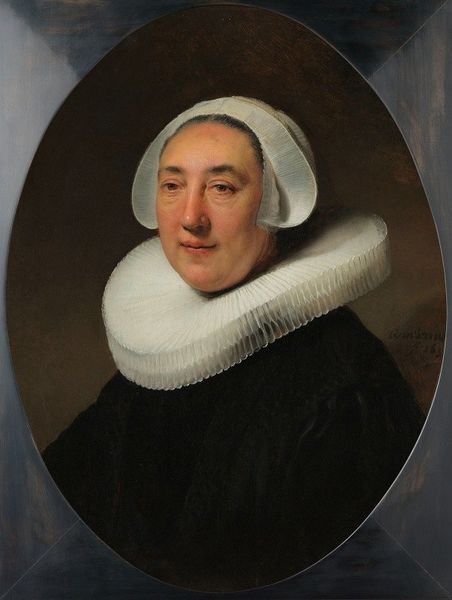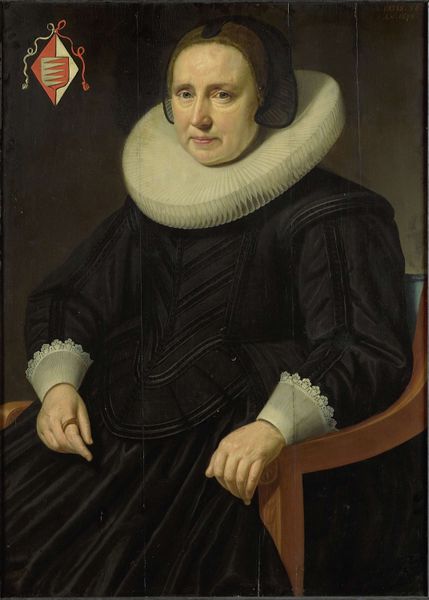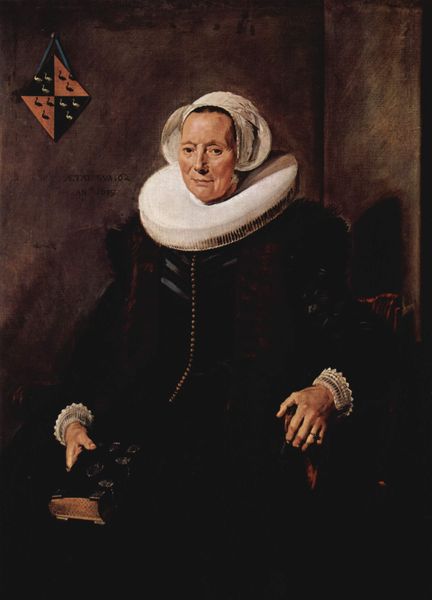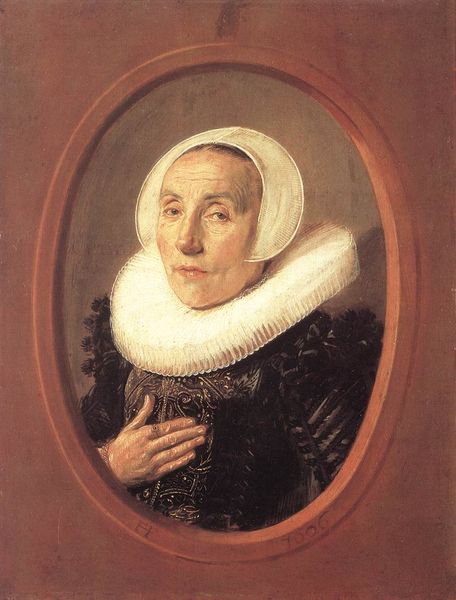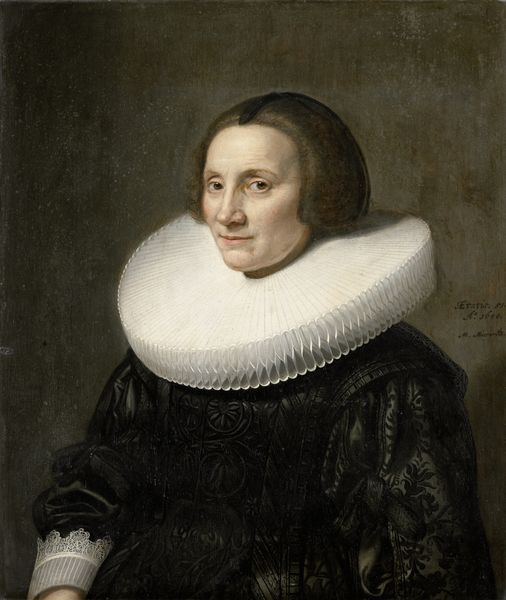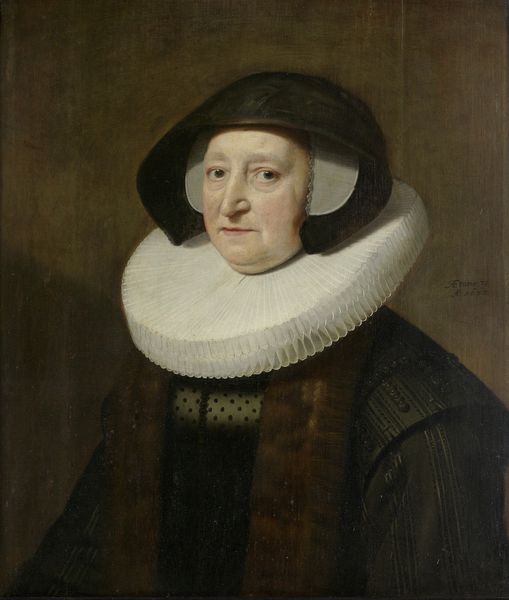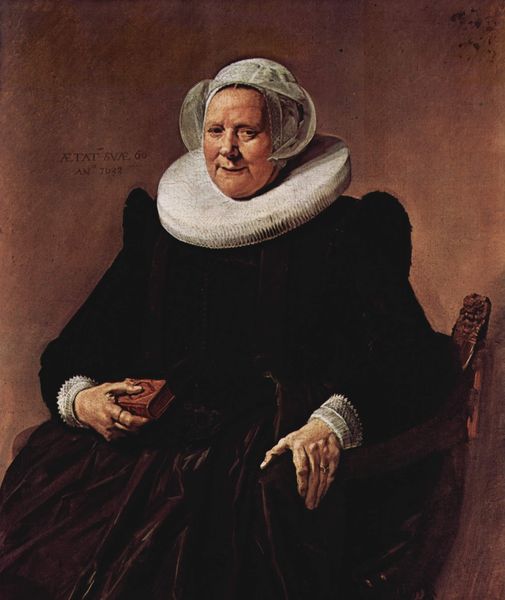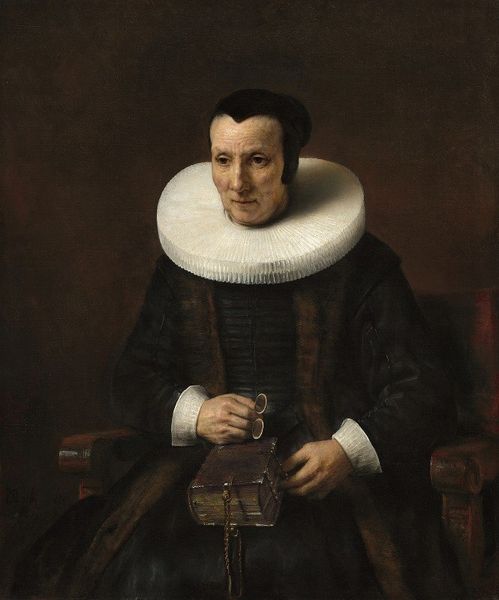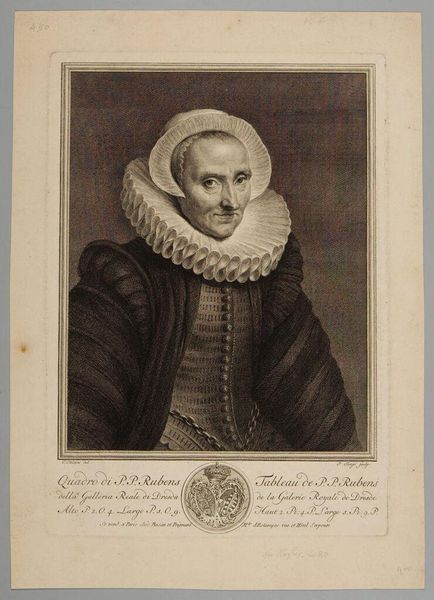
painting, oil-paint
#
portrait
#
dutch-golden-age
#
painting
#
oil-paint
#
history-painting
#
realism
Copyright: Public domain
Curator: I'm immediately drawn to the intense geometry of the pleated ruff encircling the woman’s face; it's quite captivating. Editor: Indeed. What we have here is "Portrait of Margaretha de Geer, Wife of Jacob Trip," rendered in 1660 by Nicolaes Maes. Considering de Geer’s familial position, we should understand her representation as indicative of the period’s social hierarchies and the performative nature of status. Curator: Absolutely. The composition is rather striking—note how the somber black dress is balanced by the red in the chair behind her. Editor: Let’s not forget this was the Dutch Golden Age, and portraiture of this kind solidified one’s presence and legacy within society. Margaretha’s controlled demeanor communicates the power she possessed through marriage and birthright. The use of oil paint enhances this image—its sheen providing an enduring quality, suggestive of her own everlasting significance. Curator: The realism Maes achieved is rather stunning; every wrinkle around her eyes, the slight sag of her jowls. These aren't imperfections airbrushed away; rather, they illustrate a lived life. The artist encourages us to observe her closely as a signifier of social conditioning during the period. It makes one wonder about the choices afforded to a woman like her. Editor: And it’s through such technical skill—a command of form and texture, not just the rendering of her facial features but also the tangible quality of her clothing—that the work operates. I also notice how her gaze meets ours. It makes you feel quite aware, perhaps even challenged, in the encounter. Curator: Seeing past the formality and carefully constructed display, I am touched by the vulnerability beneath that pristine, oversized collar. Editor: In a formal sense, the layering contributes to a complex visual depth, encouraging continuous visual engagement. Curator: Thank you, this close look makes one contemplate more than just brushstrokes and ruffs, offering some insights into the lives of women in 17th-century Netherlands. Editor: Yes, through close observation, even such seemingly straightforward portraits reveal rich, nuanced stories about their time.
Comments
No comments
Be the first to comment and join the conversation on the ultimate creative platform.
